One of the most important urgings I heard before beginning my study abroad semester was to take the time to explore my “home-base” city and country. Luckily for me, studying in such proximity to London has made travelling to other parts of England extremely accessible and easy. A quick train ride away lie dozens of quaint and historic towns and cities that provide a welcome contrast to the hustle and bustle of one of the busiest cities across the globe. Through my visits to different areas of England, I have found myself identifying the similarities and differences that exist between the varying cities of this small country. This ability to better understand the country I am studying in has helped me to feel more completely immersed in the study abroad experience.
Dover
At St Mary’s University in Twickenham, England, the International Student team has partnered with a tour agency to offer international students with the opportunity to participate in day trips to common “must-see” destinations across England. At the beginning of March, I participated in a day trip to Dover, on the south-eastern coast of the country. Filled with rolling green hills dotted with grazing sheep, and with a backdrop of the English Channel, Dover is as picturesque as a postcard. On arriving in the town, our tour group hiked along the famous White Cliffs of Dover and took in the views. After exploring the cliffs, we had the chance to walk around town and explore the beach. It was a great souvenir-finding expedition and our whole tour group left with seashells from the English Channel. After spending half the day admiring the scenery and nature, we were driven up to the highest point of the town to Dover Castle. Built in the 11th century, Dover Castle is a reminder of how long England’s history truly spans. We were able to explore the castle grounds, climb up to the roof, walk through exhibitions that detail what life would have been like in the castle, and got to look out over the entire city of Dover. As my first official day trip out of the greater-London area, my visit to Dover was the perfect opportunity to see a more rural and scenic side of England, that still contained the rich history I have grown used to in the city.

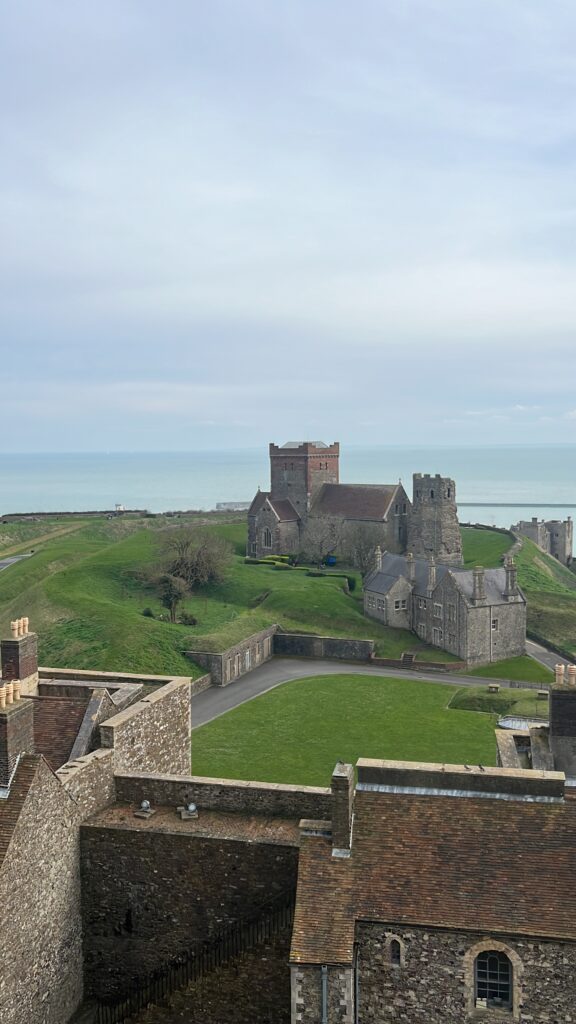
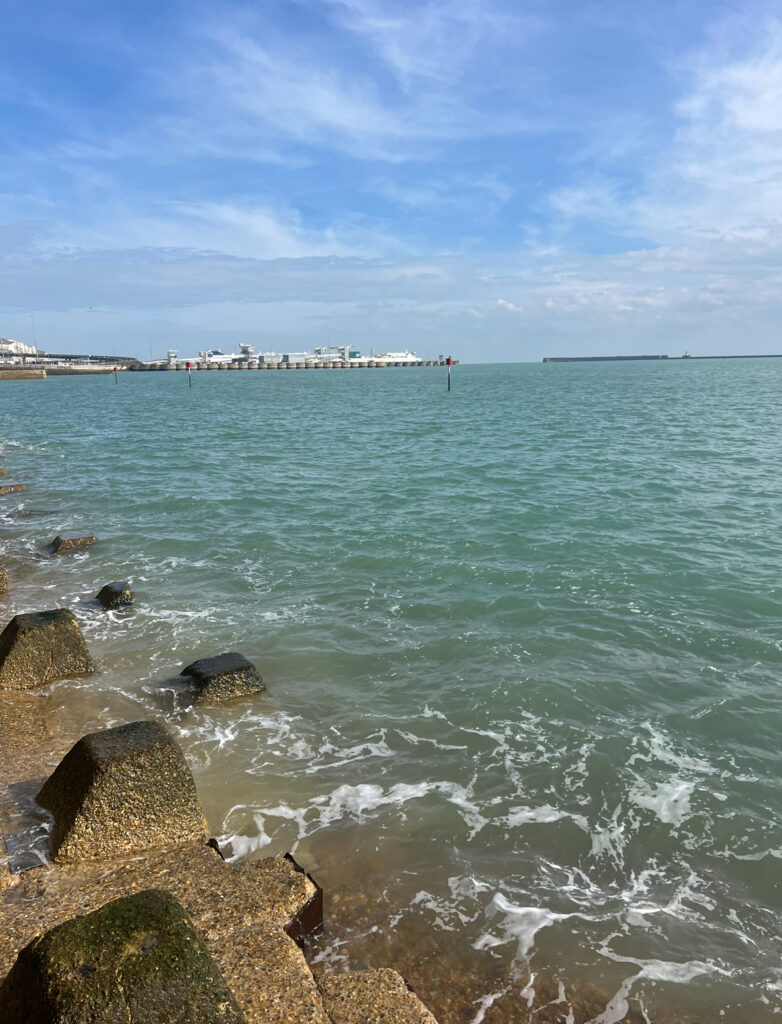
Cambridge
My second day trip in England took me north of London, to the stunning town of Cambridge. With just a ride on the London Underground and an hour and a half national-rail train, I found myself in Cambridge relatively quickly. The public transportation system throughout the United Kingdom is without a doubt the aspect of life in England that I most appreciate. After a quick walk, my friend and I found ourselves right in the city center, with so many sights to see and places to explore at our fingertips. First, we decided to stop at the Cambridge University Museum of Zoology, as admission to most of the university museums is free for the public. After exploring the small museum, we made our way to the Church of St Mary the Great, which sits right in the city center. We paid a small admission fee and had the chance to climb the 120 steps up to the roof of the church. From this high point, we could look out over the panoramic views of Cambridge, which gave us a better idea of the city’s layout and geography. Looking down over the town, we quickly found our next destination, the Cambridge Street Market. Here, there were dozens of stalls selling souvenirs, artisan goods, and lots of delicious food. We ate our lunch as we browsed the different booths and then continued to the next stop of our day. Cambridge University is surrounded by canals, which are filled with punting boats offering tours of the city by water. We hopped onto our punting boat and got to sit back and relax as our tour guide, a Cambridge student himself, took us down the canal and summarized the history of the University colleges and the city of Cambridge itself. This was, without a doubt, a highlight of the day, and such a fun and unique way to explore the city. After our tour, we stopped at one of the few locations of Fitzbillies’s bakery, a pastry shop chain in Cambridge that is known for their Chelsea Buns, which were delicious! With our remaining hours in the city, we climbed to the top of the Castle Mound hill and explored some of the local shops before we made our way back to the train station. The stunning architecture and history paired with the younger demographic of people made Cambridge one of my favorite places I have visited this semester.
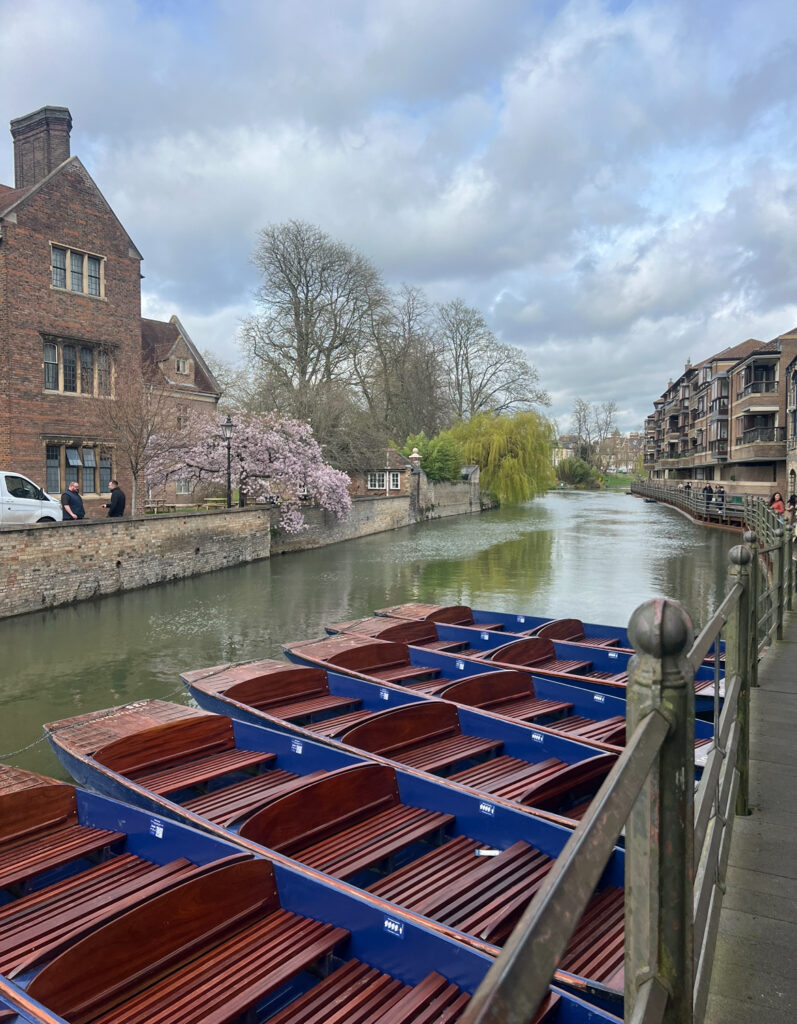
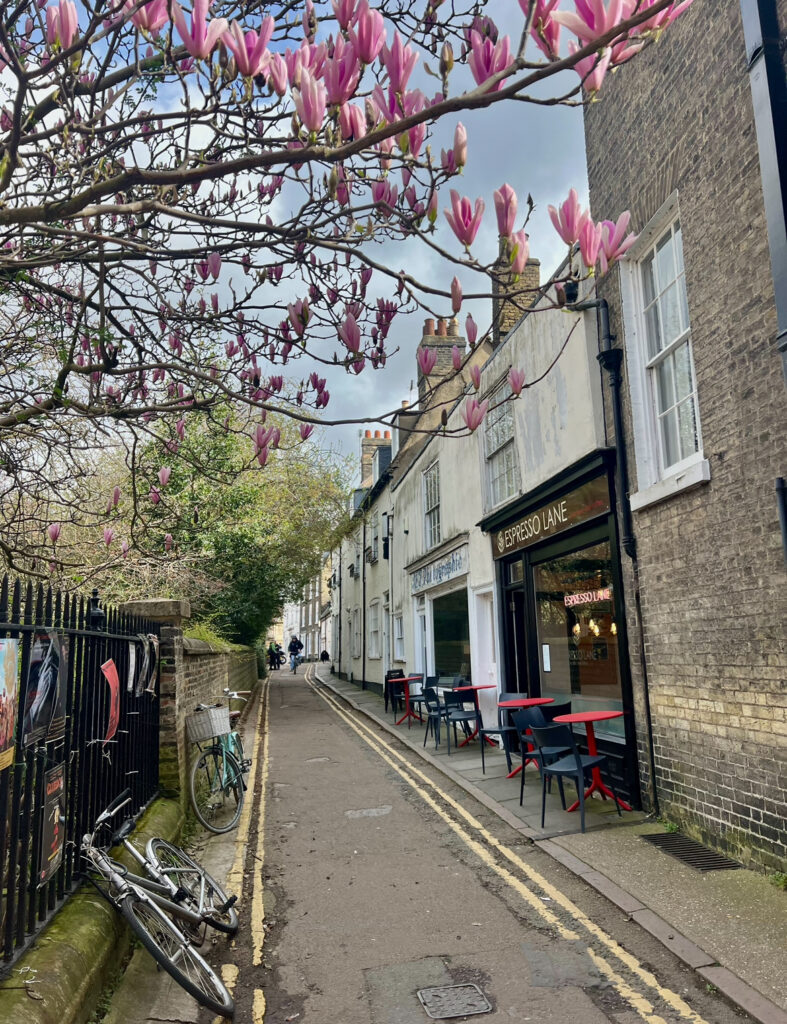
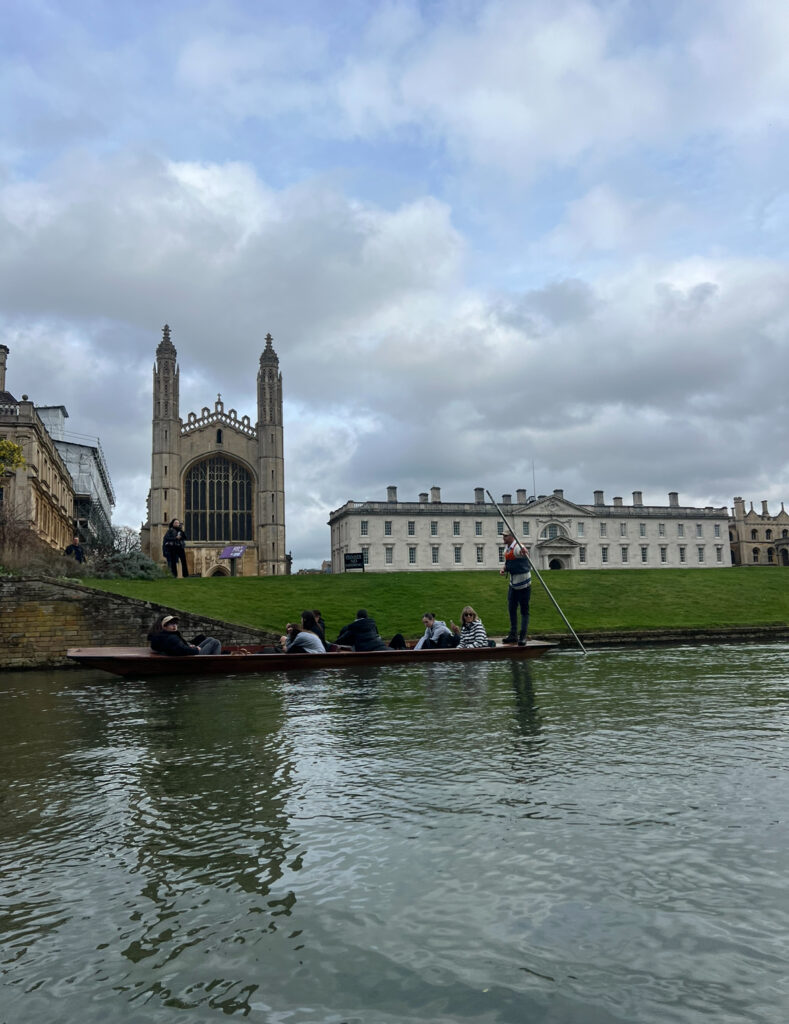
Stonehenge, Bath, & The Cotswolds
Due to their proximity, many tour companies offer guided tours that cover multiple English cities and landmarks in the span of one day. Eager to try to fit in as much as I can in my short time abroad, I used travel sites, like TripAdvisor and Viator, to explore the day trip options that would cross some places off my bucket list. Leaving from London, my day trip to Stonehenge, Bath, and the Cotswold village of Castle Combe offered me a glimpse of a whole new side of England that I was yet to see.
Beginning in Wiltshire, I was finally able to set eyes on one of the most famous and historic landmarks in the world; Stonehenge. This prehistoric monument was built thousands of years ago by the Neolithic people that once called England their home, and it is fascinating to think that part of their world is still standing for us to see today. Although the exact purpose of Stonehenge is not known, research has shown that the stones were placed to align with the movements of the sun. With each stone weighing multiple tons, it was no easy feat for the Neolithic people to structure the monument, and the preservation of the stones today shows how strong the structure really is. Driving away from Stonehenge, I felt a sense of accomplishment at finally making it out of London to see one of the most famous sights in the world.
Source: English Heritage
A short drive away from Wiltshire is the ancient town of Bath. Due to the hot springs in the area, the town is named after the Roman Baths that were founded around 60 AD. While the town is filled with stunning architecture, talented buskers performing on the streets, and many cafes and shops on the streets, the true highlight is the chance to explore the baths themselves. Still to this day, Bath is filled with spas that utilize the hot springs to carry on the legacy of the baths into the modern age. In the city center, the Roman Baths Museum takes you on a journey through the remains of the Roman Baths where you can see the hot springs and learn about the lifestyle of the Ancient Romans that once lived in the town. It was fascinating to be able to feel the steam rising from the bubbling water, even on a cold and windy spring day. Before we left the museum, we even had a chance to drink the water from the springs, but it is so rich in minerals it tastes extremely unappetizing. While I knew that Bath was a beautiful town, I had no idea about its Roman past and learned so much during my short visit.
The last stop of the day was Castle Combe, a quaint little village in the Cotswolds region of England. Much smaller than the other places I have visited during my time abroad, Castle Combe offered me a glimpse of what life is like in a small English village. With stone houses and cobblestone roads, the town is right out of a fairytale, and we were easily able to take in the sights on foot. This was the first place I’ve visited that didn’t feel flooded with tourists or souvenir shops, and instead just cafes, post offices, residential homes, and small businesses. It was the perfect place to end our day exploring England, and driving back over the rolling hills at sunset was an amazing way to end our exploration.
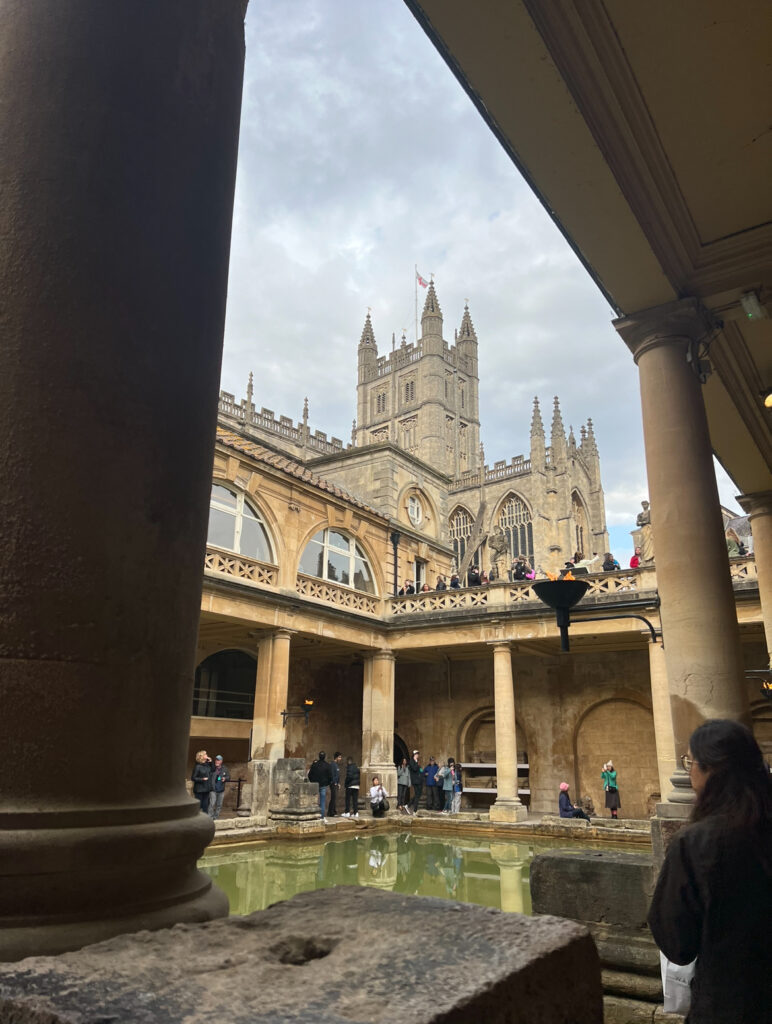
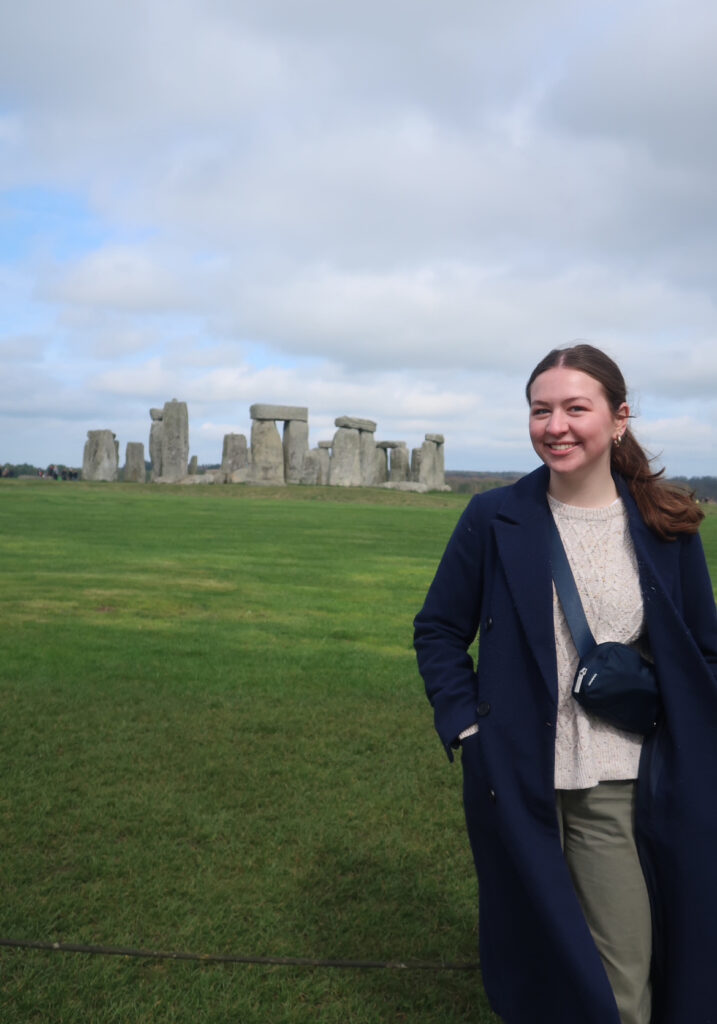
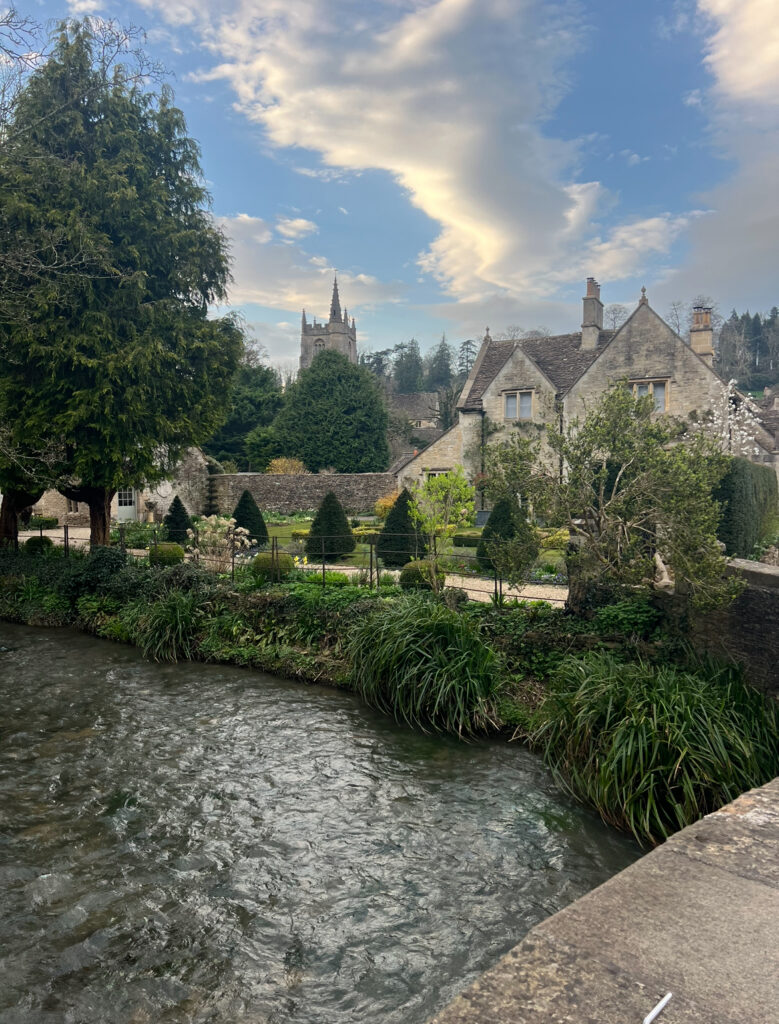
Windsor
My most recent excursion out of London took me to Windsor, about forty-five minutes away from Central London and easily accessible by trains or a car service. Windsor is pouring over with small shops of souvenirs and restaurants, but the true highlight of this small but busy town is Windsor Castle. Today, Windsor Castle is the oldest and largest occupied castle in the world, with the British royal family frequently taking up residence there to escape the busy inner-city. This castle has been on my bucket list for a long time, and it was incredible to see such a historic building in action. I was able to watch the Changing of the Guards ceremony, which is a long-standing British tradition, as well as explore the State Apartments and an exhibition on replica royal residences that was gifted to Queen Mary, wife of King George V. The highlight of my day, however, was getting to visit St. George’s Chapel on the grounds of the castle. This chapel is much smaller than the grand Westminster Abbey in the heart of the city, but it was equally opulent and impressive in my opinion. As you walk through the chapel, which has been home to many famous royal weddings (like Prince Harry and Meghan Markle’s 2018 ceremony), you arrive at a corridor where many influential figures of British history are laid to rest. Here, I was able to see the resting place of Queen Elizabeth II, Prince Philip, the Duke of Edinburgh, King George VI and his wife, Queen Elizabeth, Princess Margaret, and Henry VIII and his third wife, Jane Seymour. The historical importance of St. George’s chapel was not lost on me and was definitely one of the most meaningful places I have visited while abroad.
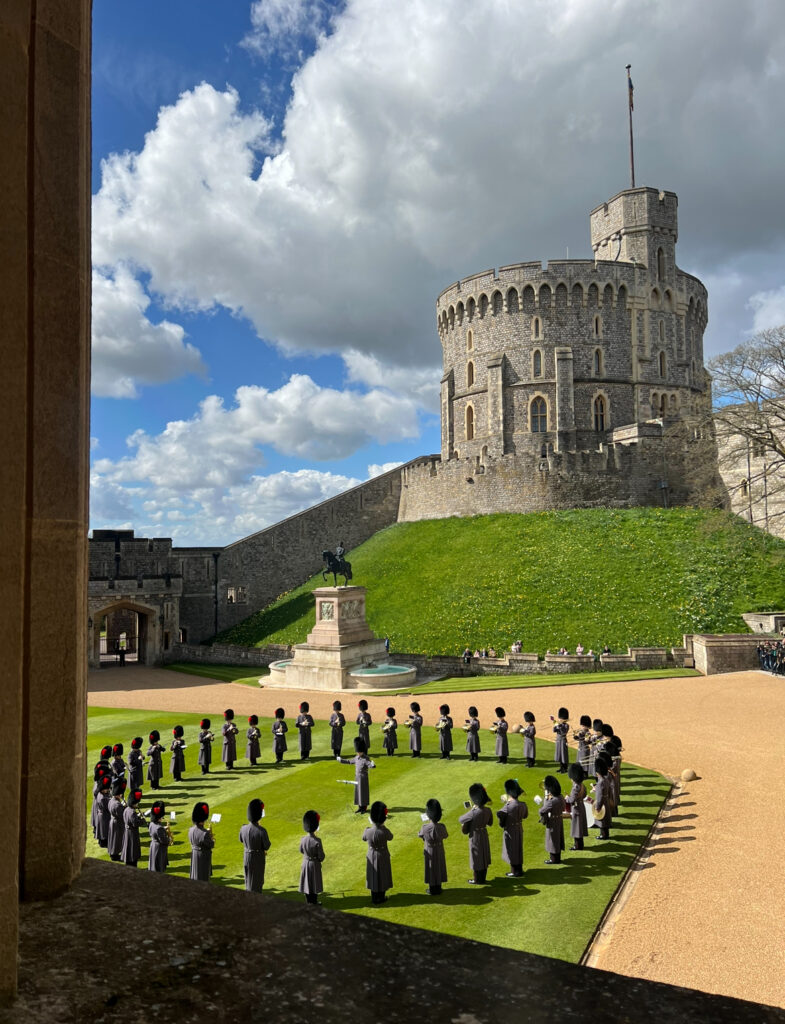
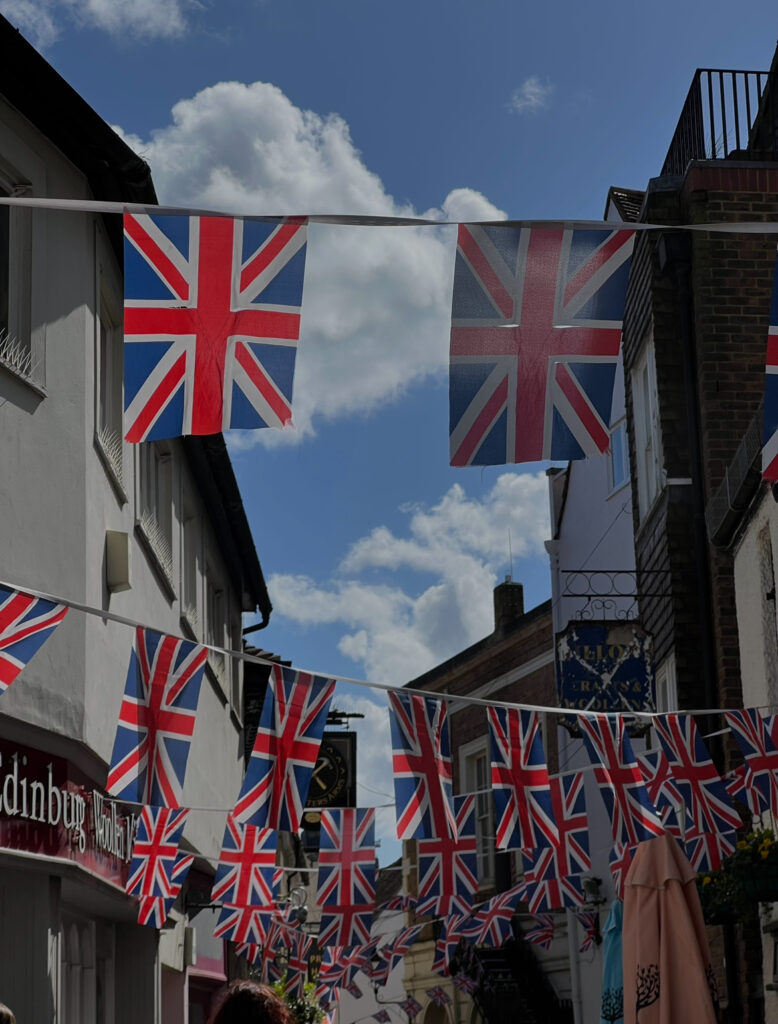
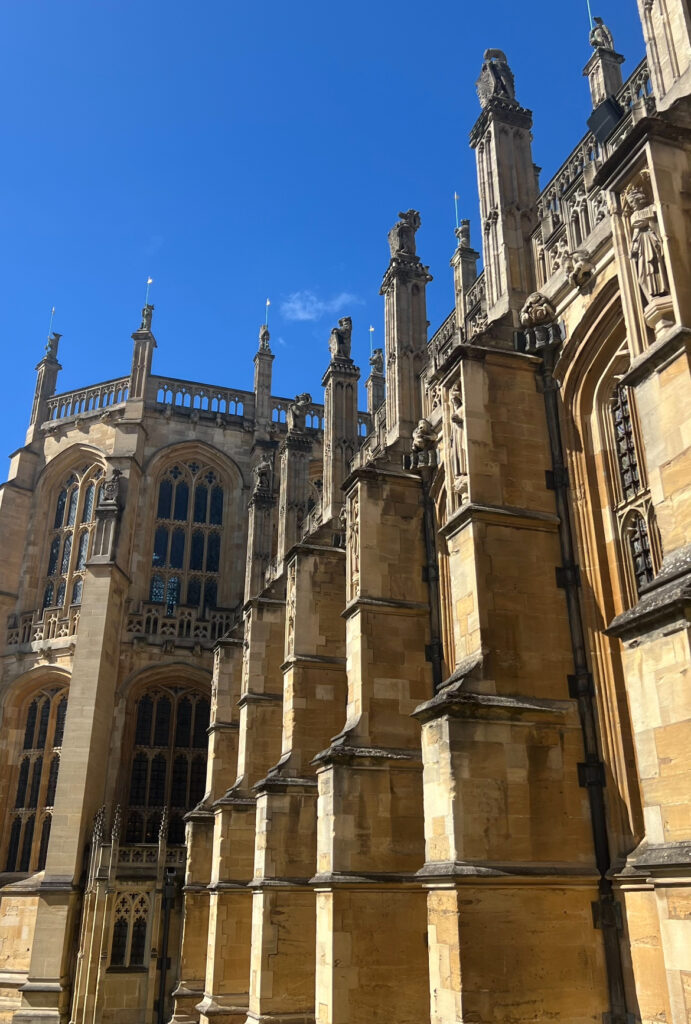
To anyone studying abroad, or considering taking the leap to study overseas, I highly encourage you to take the time to explore your host country. There can be a lot of pressure to spend your weekends jetting off to new countries, but there is so much value in making yourself feel at home in the place that you study. Take the time to explore all the different aspects of your host country’s cities and cultures, you won’t regret it!
Leah S is majoring in English Communications and Political Science with a minor in History, and studying abroad at St Mary’s University London, Twickenham, England.
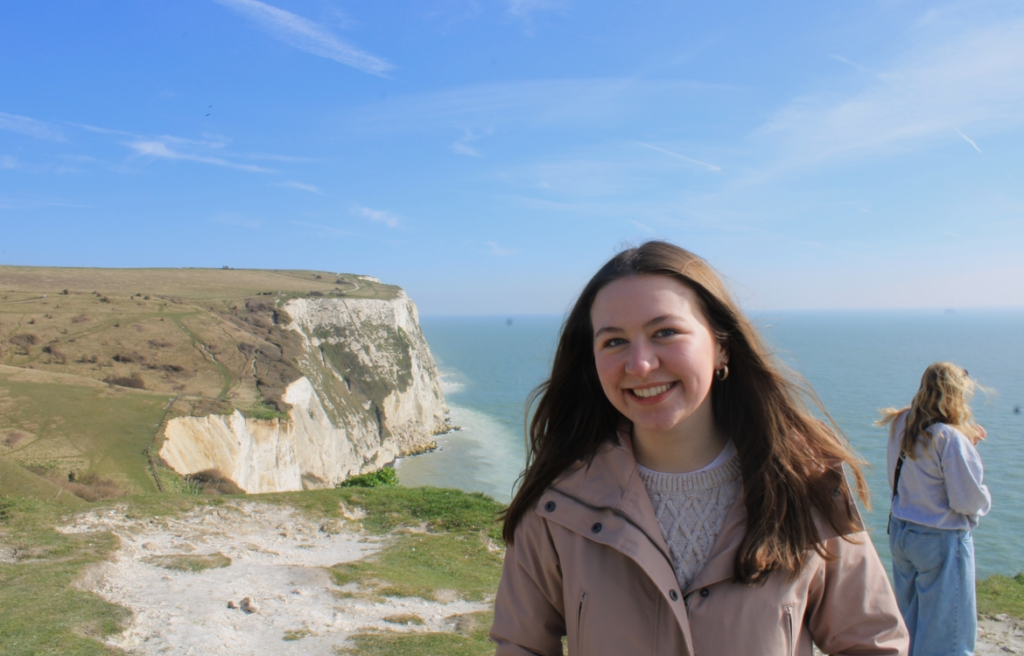
Comments are closed.